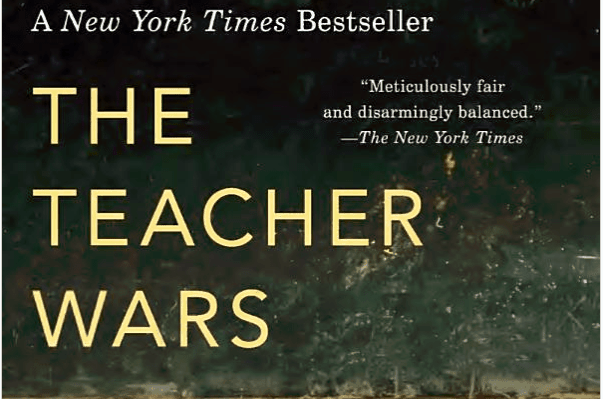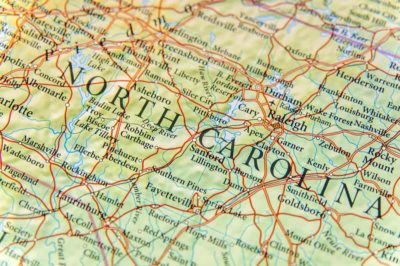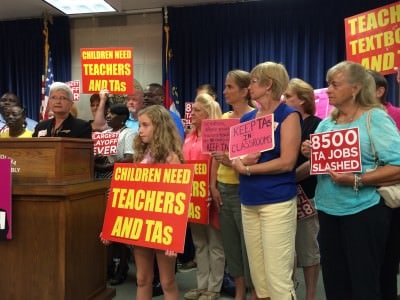
President Theodore Roosevelt is credited with saying, “The more you know about the past the better prepared you are for the future.” It certainly applies to the state of public education, especially here in North Carolina. That is if one is willing to learn from the past.
Public education in the Old North State has become more than a politically charged debate; it is a topic that sways votes and midterm elections are approaching quickly. More than half of the state’s budget is dedicated to public education and everyone from the student to the parent to the employer to the taxpayer has a stake in its success.
Few books have fully explored the history of public education as well as Dana Goldstein’s The Teacher Wars: A History of America’s Most Embattled Profession. Yet, what makes Goldstein’s work most applicable to today’s public education stakeholder is its accessibility. Reading it for academic purposes or just investigating the teaching profession would yield the same results: understanding how public education’s past has helped to mold its current state.
It is easy for someone to make comment about public education based on how it has expressed itself in his/her life. What Goldstein does is uncover the roots of those manifestations. As an education journalist, she keeps an objective eye on the events of the past tracing education from its “Common School” beginnings through the value-added measures used in evaluating teachers in a data-driven society.
The power of Goldstein’s book is the ease in making parallels between the events that shaped public education in the past and the current issues with which North Carolina currently wrestles. The origins of the teaching profession centered mostly on the recruitment of women as teachers. Goldstein quotes Horace Mann citing his argument that teaching “was a woman’s true calling, one that would take advantage of all her natural, God-given talents as a nurturer.” Teacher diversity has become a bit of a topic here in North Carolina along both gender and racial lines as the makeup of the teacher force in North Carolina varies greatly from the actual student population.
The current struggles the state faces in truly defining what a public education should prepare students for also has a strong link to the past. The terms “21st Century Skills” and “College & Career Ready” are frequently sprinkled in arguments by politicians and educators alike. Couple that with the rise in philanthropic money to fund various educational opportunities (like Gates and Walton Foundations) for low-income students.
Goldstein’s recounting of the ideological wars between W.E.B. Du Bois and Booker T. Washington also show some of those same dynamics concerning curriculum working a century ago. She states,
“So the infamous debate between Du Bois and Washington was mostly a disagreement over emphasis: whether to focus philanthropists and policy makers on creating basic educational opportunities for the black masses, or on ensuring access to higher education for a smaller number of African Americans.”
This quote also alludes to the debate over charter schools and their purpose in North Carolina, a topic that in and of itself is worthy of its own book.
Goldstein traces the careers of educational icons like Al Shanker who is credited with the idea of charter schools as a way for local school systems to experiment with alternative teaching methods to possibly incorporate into mainstream public schools. The transformation of that idea to its current manifestations in a state that has removed the cap on the number of charter schools is also investigated and makes it easier to compare what North Carolina has today in its charter schools versus the original idea.
Shanker also was active in teacher unions, and while North Carolina is a right-to-work state that bans unions, teacher associations do exist in North Carolina such as NCAE and its ability to lobby for public schools is strong and often comes at odds with the state government. Such parallels make Goldstein’s title of her book more apropos as she talks of the many high-profile union / government conflicts.
Poverty and its effects on public schooling is central to Goldstein’s work. The chapter entitled “The Only Valid Passport from Poverty” begins with a recounting of the Brown v. Board of Education decision that declared segregation in schools unconstitutional. But Goldstein does not focus just on what that court case did to the makeup of schools but how it affected the teaching force and the role of the community in shaping its residential schools. North Carolinians only have to look at the current Innovative School District and its shaky start to see but an example of a community wanting to have a say in its public schools.
If one were to look at the terrain of North Carolina public education, it would be easy to make a list of various players and initiatives: vouchers, Teach For America, charters, teacher recruitment, value-added measures, data-driven results, Common Core, Race to the Top, merit pay, philanthropic funding, etc.
All are discussed in Goldstein’s book whether by identifying their creation or by highlighting its effects on public education. How each applies to the past and present in North Carolina becomes clear.
While Goldstein uses her journalistic objectivity in investigating the history of the profession, she does not withhold her own opinions as she comes from a family of public school educators. The “Epilogue” is a collection of eleven conclusions about what could strengthen public education and the teaching profession, many of which are currently targeted by the North Carolina General Assembly: teacher pay, principal pay, the role of testing, and the power of teacher communities.
The Teacher Wars offers a rather comprehensive foundation in learning about the modern public education system in an unintimidating fashion. It adds a tremendous amount of texture to anyone’s understanding of schools and thoroughly explores the countless facets of the largest public service offered by any state government.
Whether one agrees with her conclusions is certainly up for debate, but one would be much more educated about public education to have that debate with Goldstein’s book. It is detached from opinion where needs be and offers erudite opinions without dominating.
In short, it teaches well.
Recommended reading



